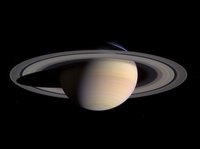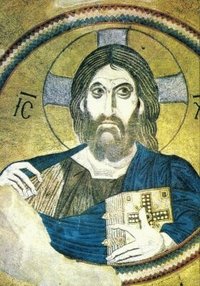Holy Prepuce
|
|
The Holy Prepuce, or Holy Foreskin (Latin prŠputium) is one of several relics purported to be associated with Jesus. At various points in history, a number of churches in Europe have claimed to possess it, sometimes at the same time. Various miraculous powers have been ascribed to it.
| Contents |
Theological origin
Orthodox Christian belief has it that Jesus ascended bodily into Heaven forty days after his resurrection from the dead. This would mean that Jesus' foreskin (removed at his circumcision) would be one of the few physical remainders of Jesus left behind on Earth. The modern, peri'ah style of circumcision did not become the standard mode until around the time of the revolt led by Simon bar Kokhba in AD 132–135, whereas the style of circumcision practised by Jews in Judea prior to bar Kokhba removed only the 'tip' of the foreskin, not all of it. Thus modern, and probably medieval, ideas of what Jesus' foreskin would be like were, and are, wide off the mark. There was also some theological dispute as to whether Jesus can really be said to have ascended wholly into Heaven if this part of his body was actually missing. This was resolved by noting that his foreskin was no more an obstacle to this than the hair and fingernails that he had cut throughout his life or the blood he shed.
A related theological issue questions whether Jesus' foreskin was restored to him in his resurrected body. The act of circumcision was a ritual of profound religious significance to Jews, and marked their membership in the covenant community. The New Testament contains extensive discussions about whether circumcision was needed for Gentile converts, and concludes that it was not; the position settled upon is that Jesus' crucifixion established a new covenant for Christians for which the rite was not necessary.
But some argue that when God achieves something by miracle, it is arbitrary to propose limits to what that miracle can restore. In Mark 12:18-25, Jesus responded to the Sadducees' question about marriage after the resurrection, saying that "When the dead rise, they will neither marry nor be given in marriage; they will be like the angels in heaven." (NIV) This suggests that the resurrected dead may have certain anatomical differences that may make the question moot. But then again, he may have restored the foreskin in heaven without taking the discarded one away from earth.
Claimants
The abbey of Charroux claimed to possess the Holy Foreskin during the Middle Ages. It was said to have been presented to the monks by Charlemagne, who in turn is said to have claimed that it had been brought to him by an angel (although another version of the story says it was a wedding gift from the Byzantine Empress Irene). In the early 12th century, it was taken in procession to Rome where it was presented before Pope Innocent III, who was asked to rule on its authenticity. The Pope declined the opportunity. At some point, however, the relic went missing, and remained lost until 1856 when a workman repairing the abbey claimed to have found a reliquary hidden inside a wall, containing the missing foreskin.
The abbey church of Coulombs in the diocese of Chartres, France was another medieval claimant. One story says that when Catherine of Valois was pregnant in 1421, her husband, King Henry V of England, sent for the Holy Prepuce. It was believed that the sweet scent that the relic was supposed to give off would ensure an easy and safe childbirth. According to this legend, it did its job so well that Henry was reluctant to return it after the birth of the child (the future King Henry VI of England).
As well as the Holy Foreskin claimed by the Lateran basilica in Rome, other claimants in history have included the Cathedral of Le Puy-en-Velay, Santiago de Compostela, the city of Antwerp, and churches in Besanšon, Metz, Hildesheim, and Calcata.
Modern practices
Calcata is worthy of special mention, as the reliquary containing the Holy Foreskin was paraded through the streets of this Italian village as recently as 1983 on the Feast of the Circumcision (marked by the Catholic church around the world on January 1 each year). The practice ended, however, when thieves stole the jewel-encrusted case, contents and all. Following this theft, it is unclear whether any of the purported Holy Prepuces still exist. In a 1997 television documentary for Channel 4, British journalist Miles Kington travelled to Italy in search of the Holy Foreskin, but was unable to find any remaining example.
Over the last century or so, the emphasis placed on relics by the Catholic church has declined markedly, with many relics with long traditions being relegated to "pious legend" by the Vatican. Interest in the Holy Foreskins has been specifically downplayed, with the observation in 1900 that these particular relics encouraged 'irreverent curiosity'.

Allegorical importance
Apart from its physical importance as a relic, the Holy Foreskin is sometimes claimed to have appeared in a famous vision of Saint Catherine of Siena. In the vision, Jesus mystically marries her, and his amputated foreskin is given to her as a wedding ring. However, this has not been traced any earlier than a seventeenth-century anti-Catholic parody, and as such is of dubious credibility.
During the late 17th century, Catholic scholar and theologian Leo Allatius in De Praeputio Domini Nostri Jesu Christi Diatriba ("Discussion concerning the Prepuce of our Lord Jesus Christ") speculated that the Holy Foreskin may have ascended into Heaven at the same time as Jesus himself and might have become the rings of Saturn, then only recently observed by telescope.
Voltaire, in A Treatise of Toleration (1763), ironically referred to veneration of the Holy Foreskin as being one of a number of superstitions that were "much more reasonable... than to detest and persecute your brother". [1] (http://www.wsu.edu/~dee/ENLIGHT/TOTOL.HTM)
See also
References
- MŘller, Alphons Victor: Die hochheilige Vorhaut Christi im Kult und in der Theologie der Papstkirche. Berlin 1907.
- Shell, Marc. "The Holy Foreskin; or, Money, Relics, and Judeo-Christianity." Jews and Other Differences: The New Jewish Cultural Studies. Ed. Jonathan Boyarin and Daniel Boyarin. Minneapolis: U of Minnesota P, 1997.
External links
- Relics (http://www.newadvent.org/cathen/12734a.htm) article from the Catholic Encyclopedia
- The Relics of Romanism (http://www.ianpaisley.org/article.asp?ArtKey=relics) article at the European Institute of Protestant Studies (anti-Catholic site)
- Sex in History (http://www.ourcivilisation.com/smartboard/shop/taylorgr/sxnhst/chap2.htm) Mediaeval Sexual Behaviour

